Until May 11, the exhibition Joie Collective – Apprendre à flamboyer (Collective Joy: Learning to Shine) is showing at the Palais de Tokyo in Paris. Curated by Amandine Nana, a young curator who joined the institution’s team in 2023, it paints a portrait of communal festivities as a tool for social justice.
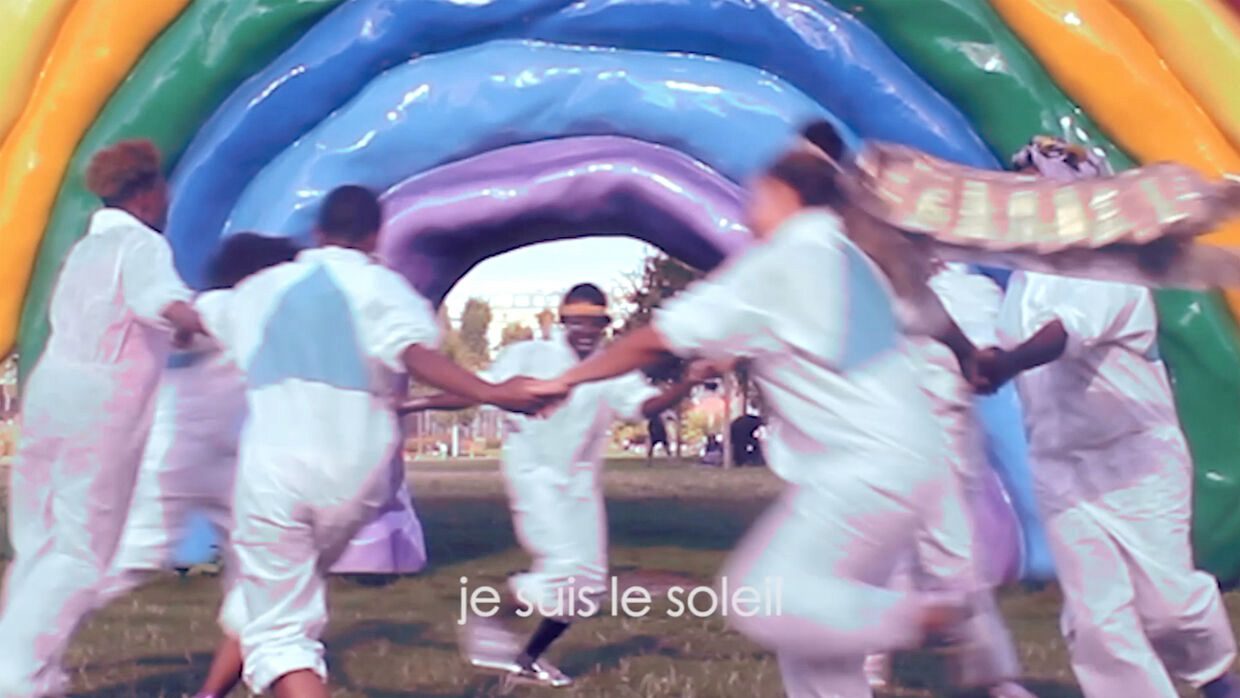
Soñ Gweha, Nyum Elucubris, 2018. Courtesy of the artist.
Curator, author, poet, and researcher Amandine Nana had already started making her mark in October 2024 at Palais de Tokyo with Tituba, qui pour nous protéger?, a group show around the themes of memory, transmission, and ancestrality. It was inspired by I, Tituba, Black witch of Salem (1986), one of the best-known books by renowned Guadeloupean writer Maryse Condé, who passed away a few months before the opening.
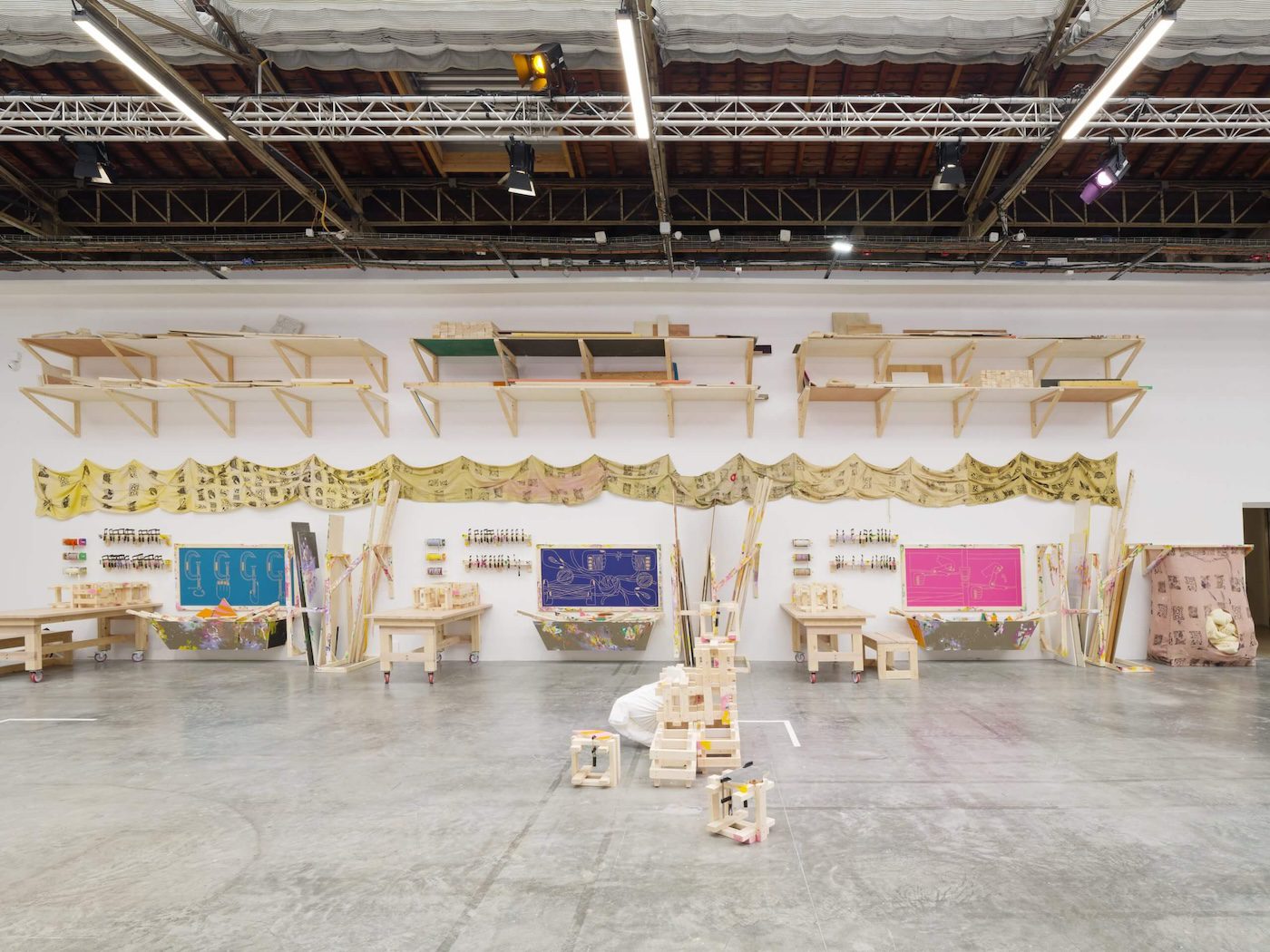
Installation view “Collective Joy – Learning flamboyance!”, Palais de Tokyo, Paris. 2025. Photo : Aurélien Mole.
With Joie Collective, Nana confirms the institution’s desire to offer new public narratives and make room for local artists who struggle to be platformed by major Parisian institutions. Stepping into the light is precisely what this project is about. The exhibition proposes joy as a tool of bonding, as an emotion that respects individualities but is above all collective. This kind of joy, according to the curator, is “a yearning to reinvent ourselves, to exist, to fully embrace individuality while feeling part of a collective, transformative adventure.”
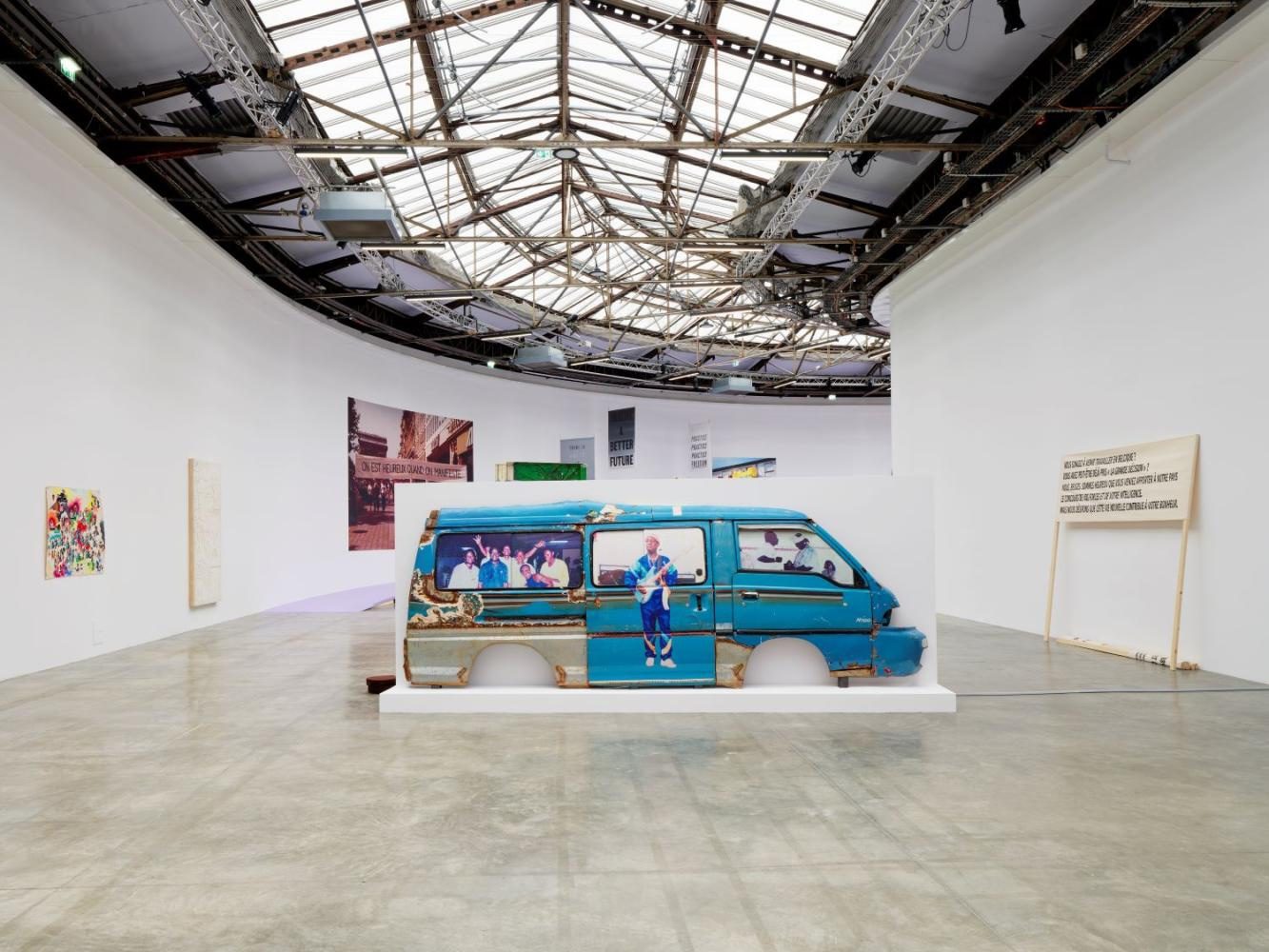
Installation view “Collective Joy – Learning flamboyance!”, Palais de Tokyo, Paris. 2025. Photo : Aurélien Mole.
Transformation and flamboyance are of particular importance here. Indeed, “la flamboyance” is a French Afrofeminist praxis used over the past ten years by collectives – especially the Mwasi Collective – to combat the invisibility and silencing of Black women, non-binary and queer people in all spheres of French society. These grassroot activists wear tall, African fabric headwraps during protests so they can recognize each other, signal pride in their heritage, and state their refusal to conform, blend in, or remain within the roles assigned to them by French-style assimilation. Artists, social workers, educators, students, and everyday women have shaken up anti-racist and feminist spaces over the past decade, introducing concepts such as misogynoir to the French public at large. In a country that sees community among people of color as a threat to its very existence, these women revived Black feminist thought and praxis – after a period of apparent dormancy since the late 1970s – with their flamboyance, radicality, and faith in collective struggle.
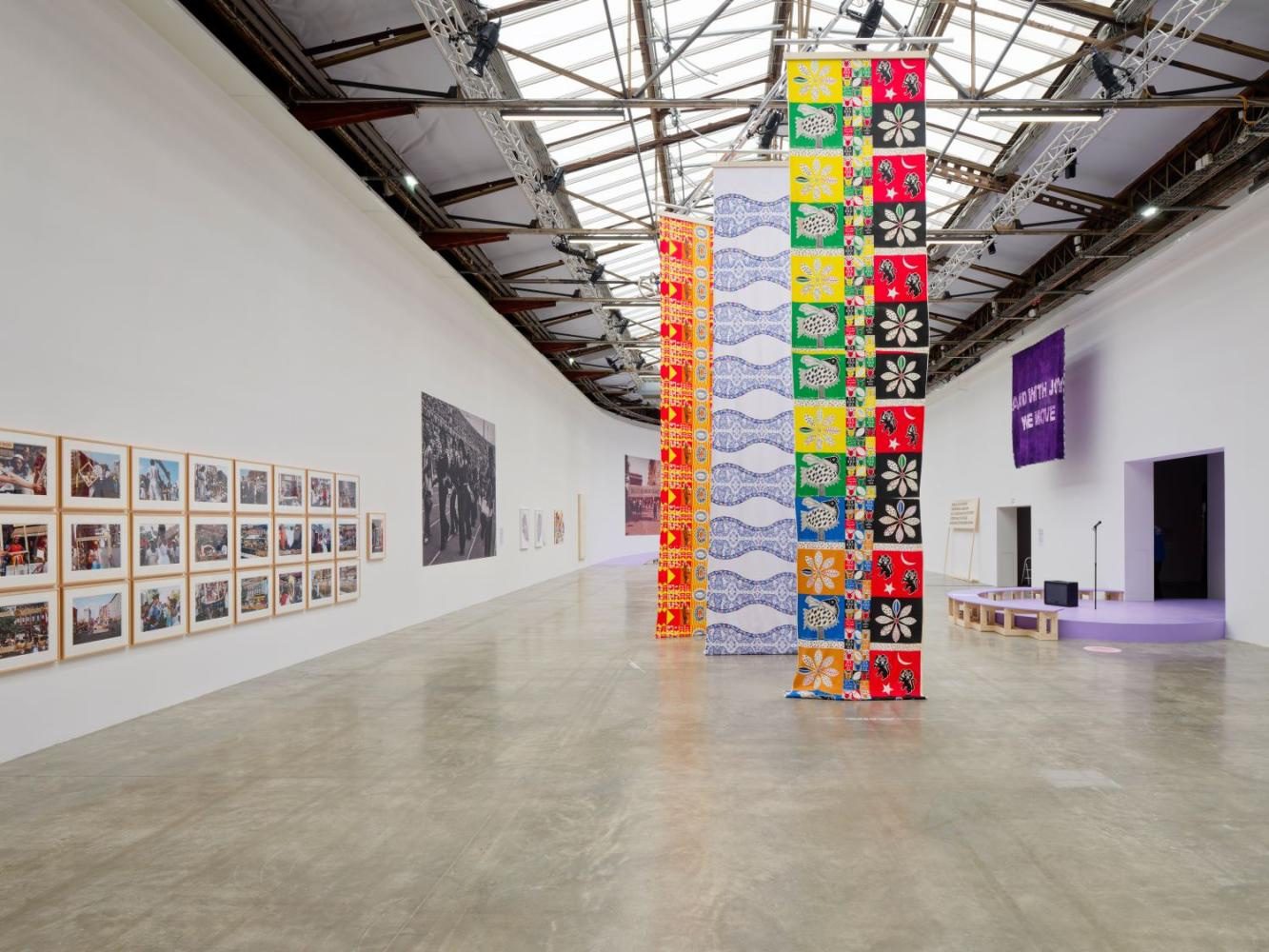
Installation view “Collective Joy – Learning flamboyance!”, Palais de Tokyo, Paris. 2025. Photo : Aurélien Mole.
In the corridors of Joie Collective, we get a glimpse of this flamboyance. For me, it is particularly powerful in Nyum Elucubris, an installation by local artist Soñ Gweha. The video at the center of this work shows Afrofeminist activists dressed in white jumpsuits and glistening cosmetics. The large inflatable rainbow in the background, the green of a Parisian park, the sunny day, and the funky house music all join hands to transmit a light feeling of carefreeness. It grants permission us to exist outside traumatic images associated with Black women’s bodies, inviting us to play and express pure childlike joy. These are underscored by the hula hoops and skipping ropes that form part of Soñ’s installation,
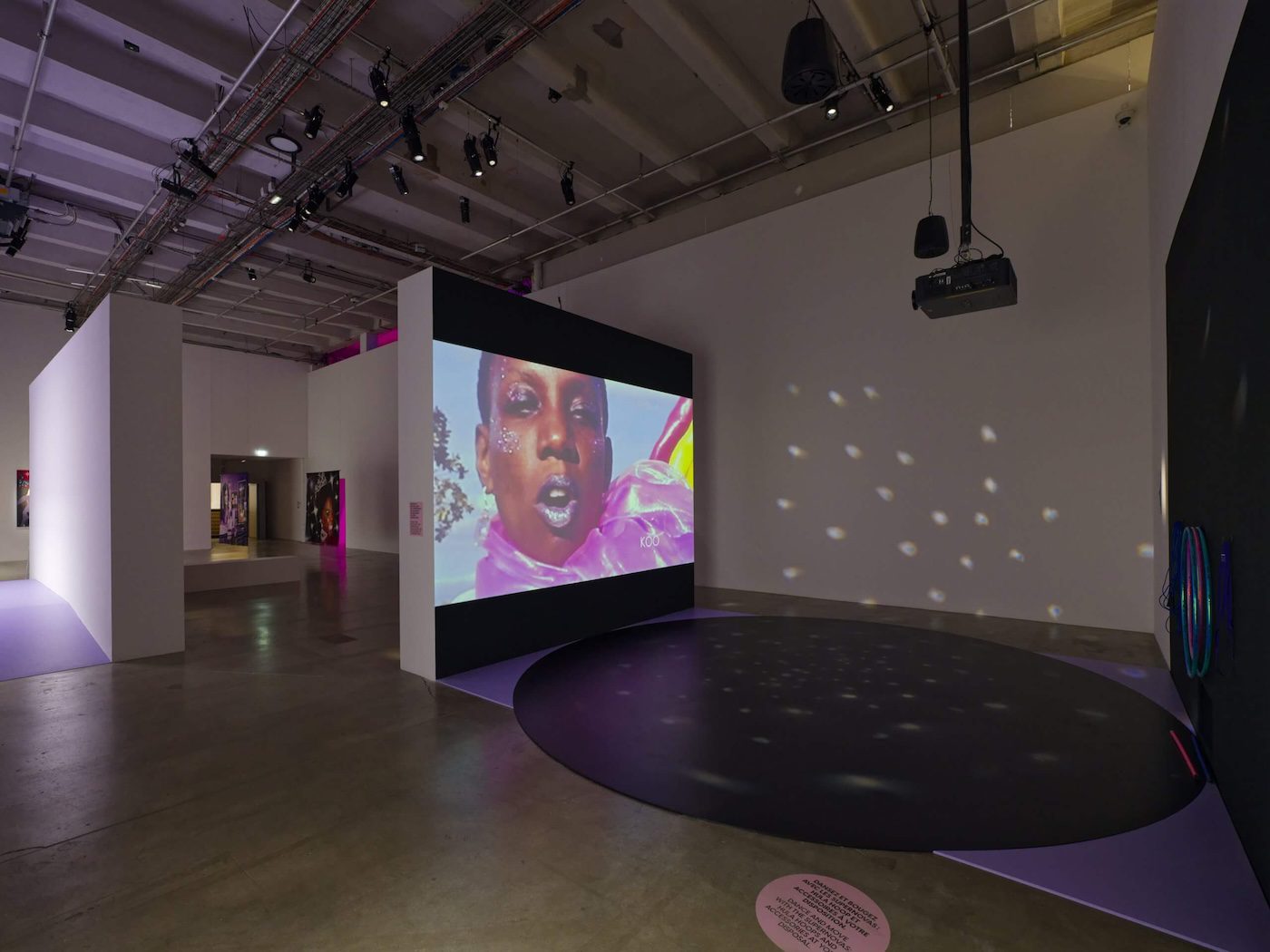
Soñ Gweha, Nyum Elucubris. Installation view “Collective Joy – Learning flamboyance!”, Palais de Tokyo, Paris. 2025. Photo : Aurélien Mole.
International artists are also well represented. Flamboyance shines through in the works of Helina Meteferia, the Ethiopian American artist whose collages of Black women wearing grand headdresses are portraits of unashamed resistance to systemic oppression and a call to hold one’s head high.
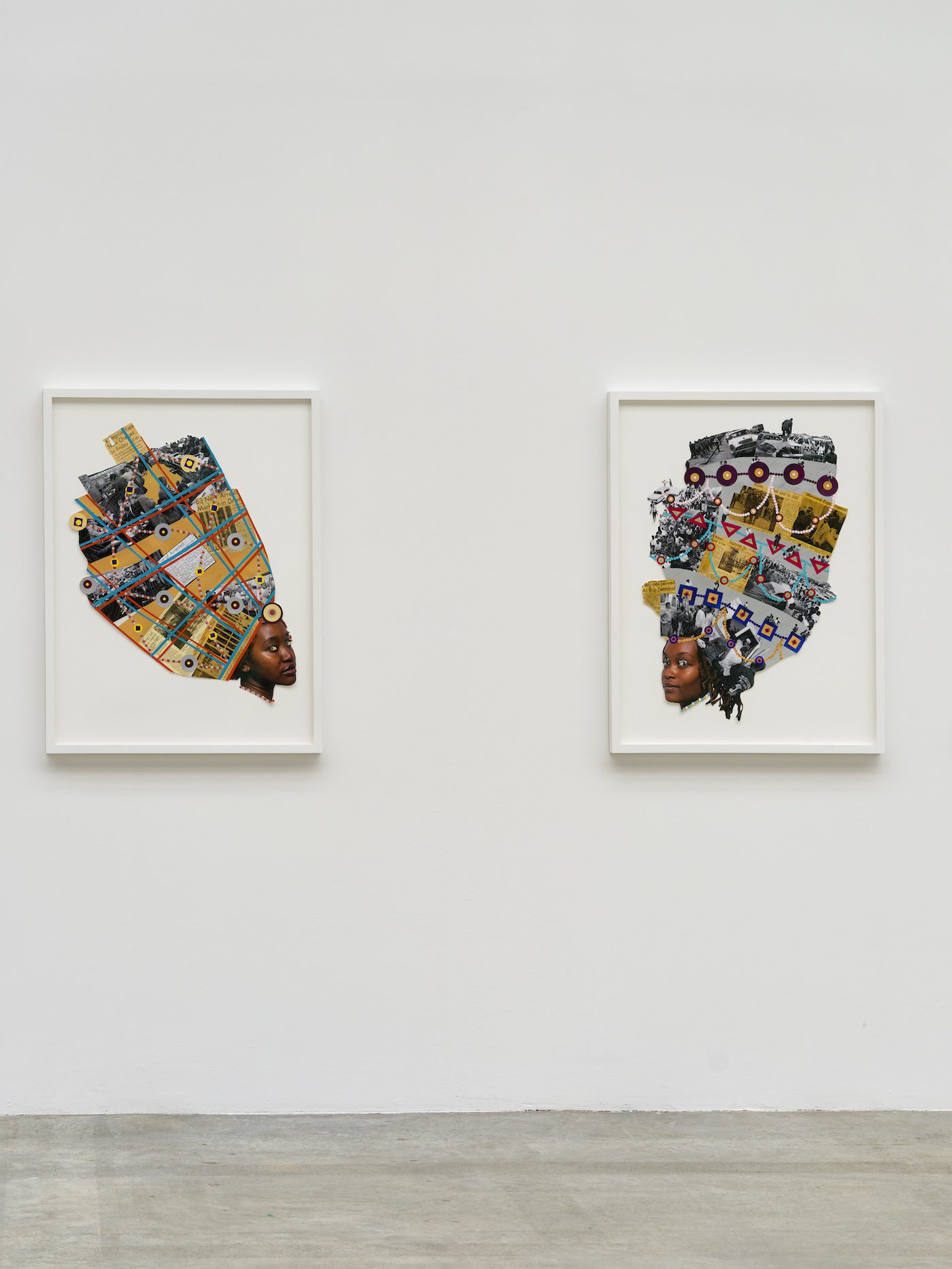
Helina Meteferia. Installation view “Collective Joy – Learning flamboyance!”, Palais de Tokyo, Paris. 2025. Photo : Aurélien Mole.
Collectively claiming space in celebratory events is the common thread running through this curatorial project. Lorraine O’Grady’s famous photos of the 1983 African American Day Parade in Harlem have naturally found their way into the mix, and it’s not surprising that one was chosen as the exhibition poster, as the parade epitomizes what is described in Dancing in the Streets: A History of Collective Joy (2006) by US-American Barbara Ehrenreich, the book chosen by the curator as her starting point.
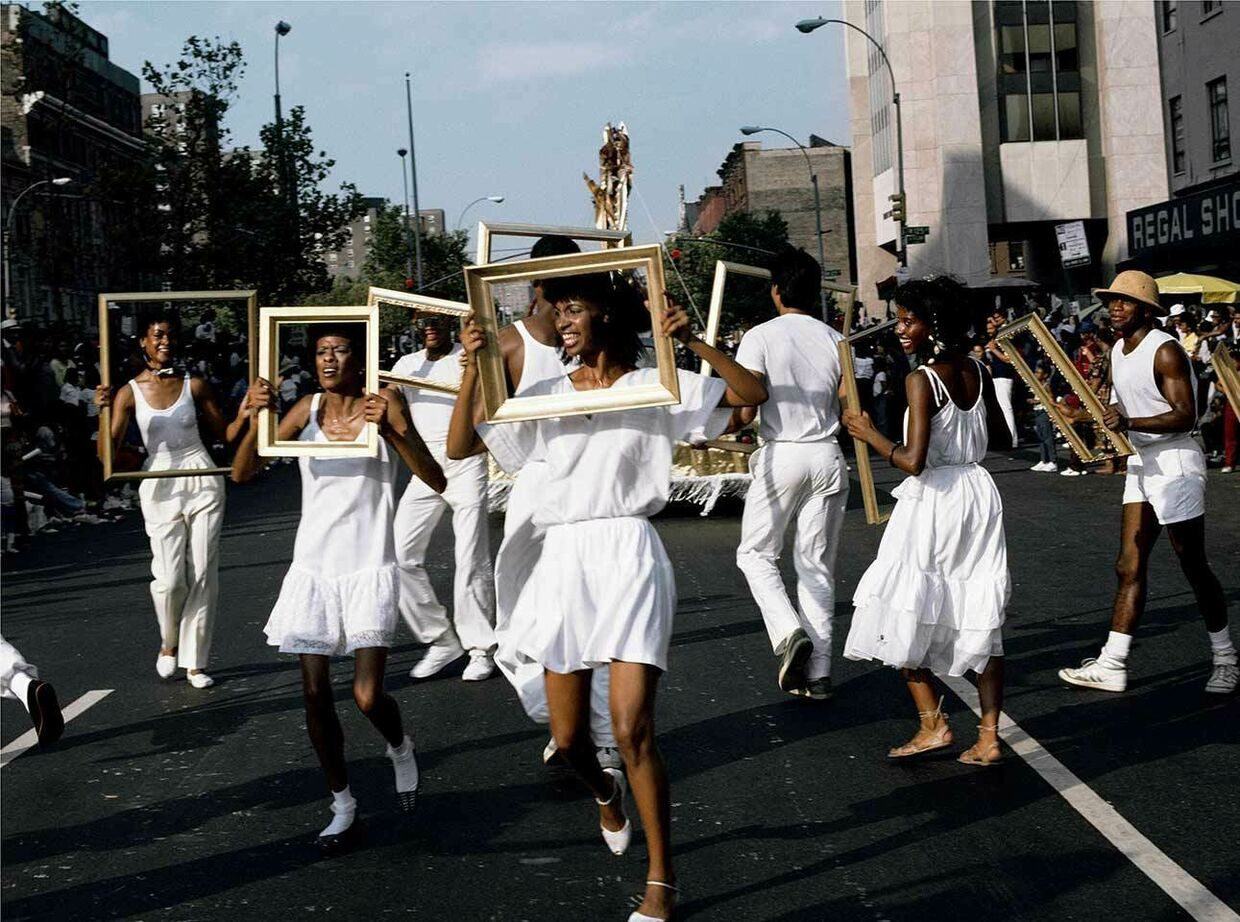
Lorraine O’Grady, Art is… (Front Troup), Lorraine O’Grady’s Troupe With Mile Bourgeoise Noire), taken at the African American Day Parade in Harlem in 1983.
The generous space of Palais de Tokyo is an ideal setting for this exhibition, which underlines the need for marginalized people to insist on their right to public spaces. Its staging here is a powerful symbol, given that the majority of Parisian art institutions are still more or less hostile to people of color, especially children and teenagers who are familiar with racist incidents occurring during school visits to institutions. The exhibition makes room for the visitor to participate by embroidering, sticking, drawing, building, and dancing alongside the artworks. This aspect is reinforced by a public program that includes evening performances in the “salle des fêtes,” a festive corner created in the middle of the exhibition to host poets, dancers, stand-up artists, and other performers, including the public. Bringing together artists from across generations and geographies, Joie Collective – Apprendre à Flamboyer shows us that in the gloomy times we’re living through, collective joy promises a path toward liberation.
“COLLECTIVE JOY – LEARNING FLAMBOYANCE!” is a group exhibition taking place from February 21, 2025, to May 11, 2025, at the Palais de Tokyo in Paris.
Kpingni-Maureen is an artist, writer and curator based between the outskirts of Paris and the city center of Abidjan. She draws on her Ivorian heritage and the legacy of black feminist thinkers and artists from Africa and its diaspora, to give birth to alternative narratives and question culture. She is founder of Néo-kômian magazine, a multilingual Panafrican newsletter on Arts & Culture.
EXHIBITION HISTORIES
More Editorial